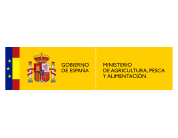
Implementation of new techniques for monitoring habitats, species, presence of bottlenose dolphin (T. truncatus) and anthropic noise in RN 2000: implications for management (“Our Dolphins II”)
MITECO
Line of action:
Marine ecosystemsStatus:
FinalizadoExecution date:
2021Total budget:
€104,905.00Amount of aid from the Biodiversity Foundation:
€88,500.00Through the use of new techniques based on remote videos and passive acoustics, the project has worked to obtain a global vision of the state of conservation of species and ecosystems within Natura 2000 Network areas of Ibiza and Formentera. To this end, non-invasive tools have been fine-tuned, easily implemented and replicable throughout the Natura 2000 Network for effective and efficient monitoring. Critical levels of anthropic noise have also been established from which the presence of bottlenose dolphins in these areas is conditioned.
These actions contribute to the general objective of the LIFE INTEMARES project to achieve a network of protected areas managed in an integrated and innovative way.
Implement new techniques for the monitoring of habitats, species, presence of bottlenose dolphin (Tursiops truncatus) and anthropic noise in the Natura 2000 Network.
It has the following specific objectives:
- Development of a non-invasive remote methodology that allows the quantification of biotic and abiotic elements in coastal waters.
- Description and assessment of the presence of habitats and species in the Pitiusas marine RN2000.
- Identification of the critical anthropic noise thresholds for the presence of bottlenose dolphins in the Natura 2000 Network.
- To make the marine Natura 2000 Network and the ecology of the bottlenose dolphin known to the public.
- To quantify the impact of the decrease in noise on the presence of bottlenose dolphins in the Natura 2000 Network due to a drop in maritime traffic due to covid-19.
- Design and testing of an effective and efficient protocol for underwater imaging.
- Design of the fieldwork plan for image taking.
- Acoustic file downloads and battery replacement.
- Taking underwater videos in seven areas, six of them belonging to the Natura 2000 Network of the Pitiusas. In total, almost 200 minutes of recording have been recorded.
- Collection of fisheries information in the Directorate-General for the Marine Environment.
- Noise analysis of all generated acoustic files.
- Analysis of the presence of bottlenose dolphins in all the files generated.
- Visual analysis of underwater videos to identify and quantify fish and benthic populations and seabeds.
- Analysis of the evolution of species and observed biomass.
- Analysis of fishery data to determine the evolution and presence of the biomass of the different species in the catches of the artisanal fishing fleet.
- Estimation of bottlenose dolphin detectability as a function of noise.
- Analysis of the possible positive impact of a decrease in marine traffic due to covid-19 on the Natura 2000 Network.
- Dissemination and communication of the project.
- The usefulness of three non-invasive tools to monitor marine natural spaces and evaluate the human impacts caused on their ecosystems has been studied.
- Specifically, the use of a small commercial ROV for the characterization of habitats and fish species has been assessed; green boxes for monitoring the small gear fleet for quantifying fishing pressure, as well as passive acoustic devices to determine the temporal evolution of the presence of bottlenose dolphins and underwater noise.
- The knowledge of the bottlenose dolphin population in the Pitiusas has been deepened, identifying the dolphins individually by their signature whistles.
- Specifically, 75 signature whistles of bottlenose dolphins and their presence in Natura 2000 Network areas have been characterised as a whole. With this, it has been possible to know the high degree of connectivity that exists between Natura 2000 Network areas.
- Thanks to the obtaining of data on underwater noise, it has been possible to theoretically estimate how much space in which dolphins can communicate is reduced when maritime traffic increases. A 70% reduction has been obtained.
- The positive impact that the stoppage derived from the covid-19 pandemic had on the presence of dolphins in the coastal area has been quantified, calculating an increase in 2020 of 66% in the presence of dolphins during the summer months.


Implementation of new techniques for monitoring habitats, species, presence of bottlenose dolphin (T. truncatus) and anthropic noise in RN 2000: implications for management (“Our Dolphins II”)









 back to search
back to search 